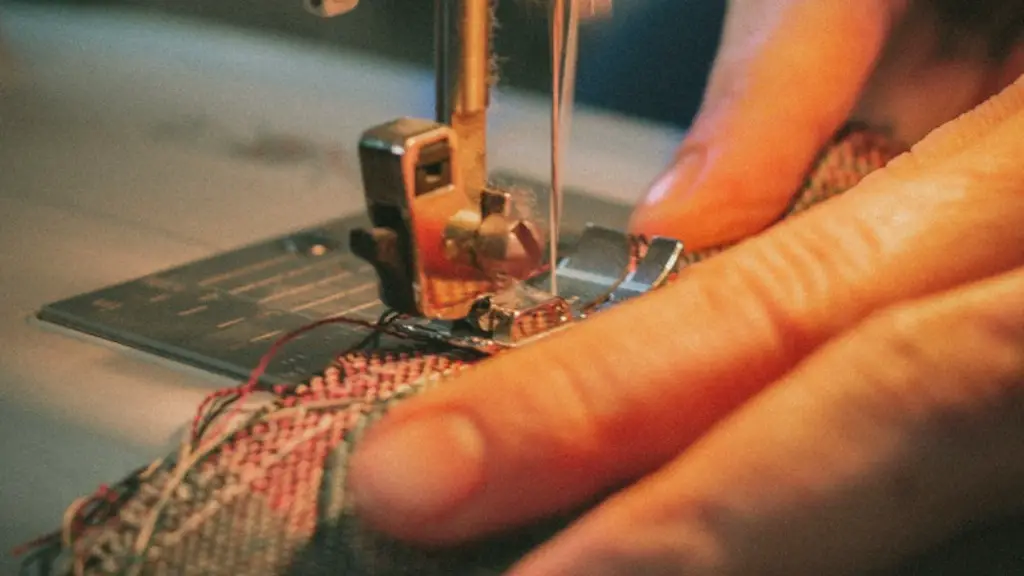1.Research
Researching the different sewing machine types and features is the first step to choosing the right one. It is worth taking time to decide what type of machine will best suit the type of sewing you wish to do. There are a wide range of models available so it is important to identify your project needs in order to narrow down the selection.
General information about sewing machines and sewing tips can be found online or through consumer magazines. Resources include instruction videos on YouTube and other websites, as well as public and private library collections. Sewing blogs, industry magazines and consumer reports also offer unbiased advice.
2. Identify Features
Identifying sewing machine features is essential when choosing a machine. Machines vary in terms of stitch functions, stitch widths, feed styles and other special features. Different models offer different levels of manual and automatic functions. Different levels of adjustments include speed and the ability to use multiple types of fabrics and threads.
Some sewing machines also come with useful accessories such as extra needles and presser feet. Consider these when making your decision. Many machines can work with both domestic and industrial stitching.
3. Budget
Shopping around and finding the best deals available is the most cost-effective way to find the right machine for your needs. Investing in a basic machine and adding extra features later can save money in the long run. It is also possible to purchase refurbished models, although buyers should always check the condition of the machine before buying.
Look out for packages that include starter accessories such as thread or needles. Some stores may also offer discounts or bundles with multiple machines.
4. Reviews
Reading reviews from real users of the machine can provide an insight into the machine’s performance, durability and features. It is also important to consider safety features and the ease of use. Customer ratings and feedback can help make the decision easier.
5. Warranty
Another important factor to consider when choosing a sewing machine is the warranty. Companies that offer extended warranties or cover replacements are usually more reliable.
6. Try It Out
Once you have narrowed down the selection, it is essential to try out the machines in person. This can give you a better sense of the machine’s operation and how it feels to sew with it.
7. Ask Questions
Finally, it is important to ask questions to learn what the manufacturer has to offer. Find out the servicing and repair requirements, as well as the availability of parts and accessories.
Section 2- Sewing Production
Production volume is one of the factors to consider when looking at machines and will differ depending on the project. Some machines might be suitable for occasional projects, while others may be better suited to higher-volume sewing.
The type of stitching and material will be dependent on the intended use of the garment and the production volume required. Some machines can handle multiple stitch types or even different materials. Different machines will also come with different performance abilities.
The threading process is also one of the main aspects to think about when deciding on a machine. Many have automatic threading options, while the manual threading may vary from machine to machine.
Section 3 – Design & Function
Style and design are often a personal preference, as a machine must not only perform as expected but must be comfortable to use. Design considerations also include the size and weight of the machine, as this may determine portability.
Design features like built-in LED lights or LCD displays might be desirable, enabling the user to sew with greater control. Consider the features most important and search for a machine with the required features.
Section 4 – Brand & Quality
Selecting a high-end, well-known brand is essential when choosing a machine. Quality is important and buyers should look for machines that offer sturdy construction, good materials and a variety of stitches.
Look for machines that offer a wide range of adjustments and settings to tailor the machine for different types of fabrics and stitches. The machine should also offer user-friendly control panels, easy threading and smooth performance.
Section 5 – Maintenance & Durability
The machine’s durability is essential and buyers should check it for signs of wear and tear. Look for machines with performance features that last long and extend the life of the machine.
Maintenance and support provided by the manufacturer should also be taken into account, as this can help reduce downtime and optimize production. Buyers should also search for good repair and servicing contracts.
Section 6 – After Sales Services
Once you have chosen your machine, it is worth considering the after sales services offered by the manufacturer. Does the company offer warranties, spare parts, advice, or even sewing classes or tutorials?
Many machines offer software upgrades which can be useful if an improved version is released. Consider whether the machine has the capability of being used with a computer and if the manufacturer offers software packages that can help to create more complex designs.
Section 7 – Final Decision
Once all the research is done, it is time to make the final decision. Take into account not only the machine itself but any accompanying services or upgrades that may be available.
Once the perfect machine has been chosen, the buyer can begin to reap the rewards of their purchase. A sewing machine can provide hours of joy and satisfaction. Careful research and decision making will make sure this is the case.



